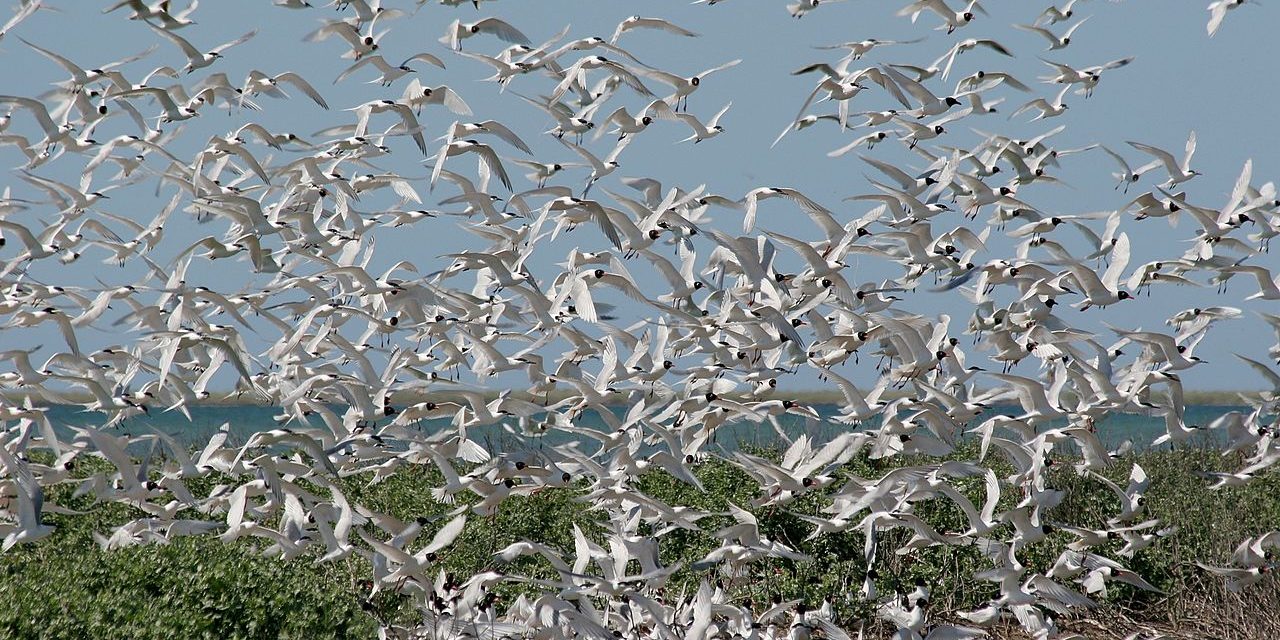The south of the Kherson region is the place of the largest concentration of nature conservation areas in Ukraine. It is here that the most important areas for wetland birds in the entire northern Black Sea region are located. They are protected at the international level by the Ramsar Convention and are the part of the Emerald Network of Europe.
There are 7 Ramsar sites in the Kherson region alone, which in terms of area (432,359 hectares) make up more than half of Ukraine’s wetlands. There are also 23 objects of the Emerald Network in the Kherson region, with an area of more than 1 million hectares. There are biosphere reserve “Askania-Nova” and the Black Sea Biosphere Reserve, several national parks and large in area reserves.
And there are extremely valuable natural areas planned for conservation and the creation of international nature conservation objects (the planned national park “Valley of the Mounds”; the planned reserves “Kardashynskoe bog”, “Korovodynskyi”, “Vyazemskyi”, “Yagorlytskyi steppe”, “Zabarine” , “Alder Sagas”, “Pyliptsevi lakes”, etc). In total, it is planned to create 125 new protected objects with a total area of almost 155 thousand hectares in the Kherson region.
In summer, these places are the region’s largest concentration places of nesting colonies of martins, terns, herons, as well as waders and other birds. These colonies number thousands of birds, including many rare ones. They play an important role in maintaining the number of populations of rare species not only in Ukraine, but also throughout Europe. During migration, these birds stop for rest and for food precisely on the coasts of the Black Sea and Sivash.
In winter, many populations of wetland birds winter in the south of the region, arriving here from various regions. This is how the largest winter gatherings of birds in Ukraine are formed, which scientists have been studying for decades. In winter, you can see the red-breasted goose, which is in danger of disappearing on a global scale; bustard, which belongs to vulnerable species. Why is this region so attractive to birds? First of all, the shallow waters of the sea allow hundreds of thousands of birds to be fed throughout the year. Secondly, we are mainly talking about nature conservation areas, where birds simply do not meet people and where nothing scares them.
Any change in living conditions can be detrimental to wetlands and lead to their rapid degradation. Bird flocks are extremely sensitive to the presence of people, machinery and the sounds of explosions.
Currently, we do not know for sure what is happening in the protected areas. However, the information coming in indicates serious threats to the birds due to the actions of the Russian military.
Starting from November, birds from the north will fly to the Kherson region. They have wintered here for centuries. And maybe thousands of years. Where will they fly from hostilities, if they could not choose another suitable place for a long time? How many of them will survive the winter and return back to northern Europe?
Photo Yu Moskalenko, CC BY-SA 4.0







